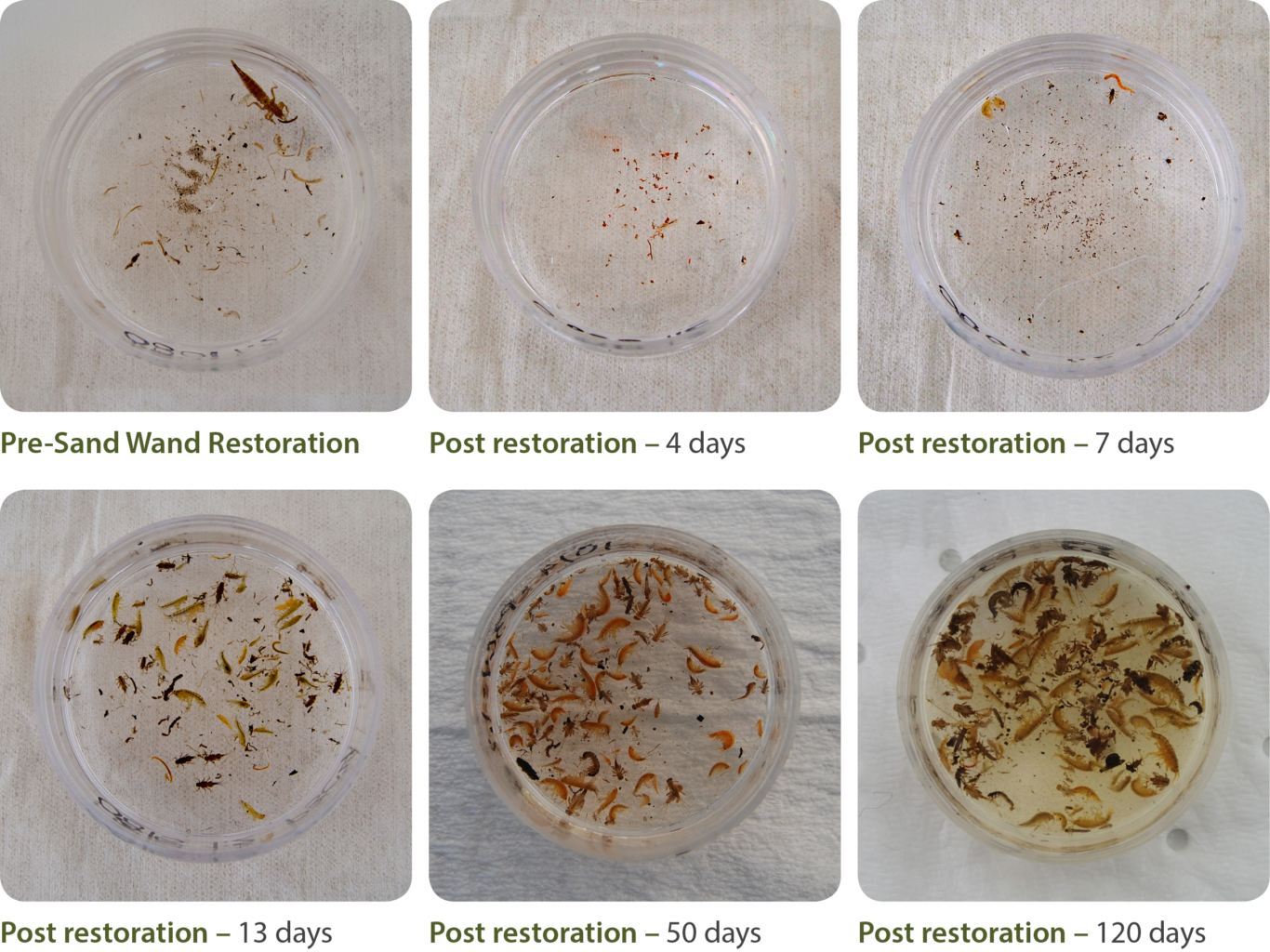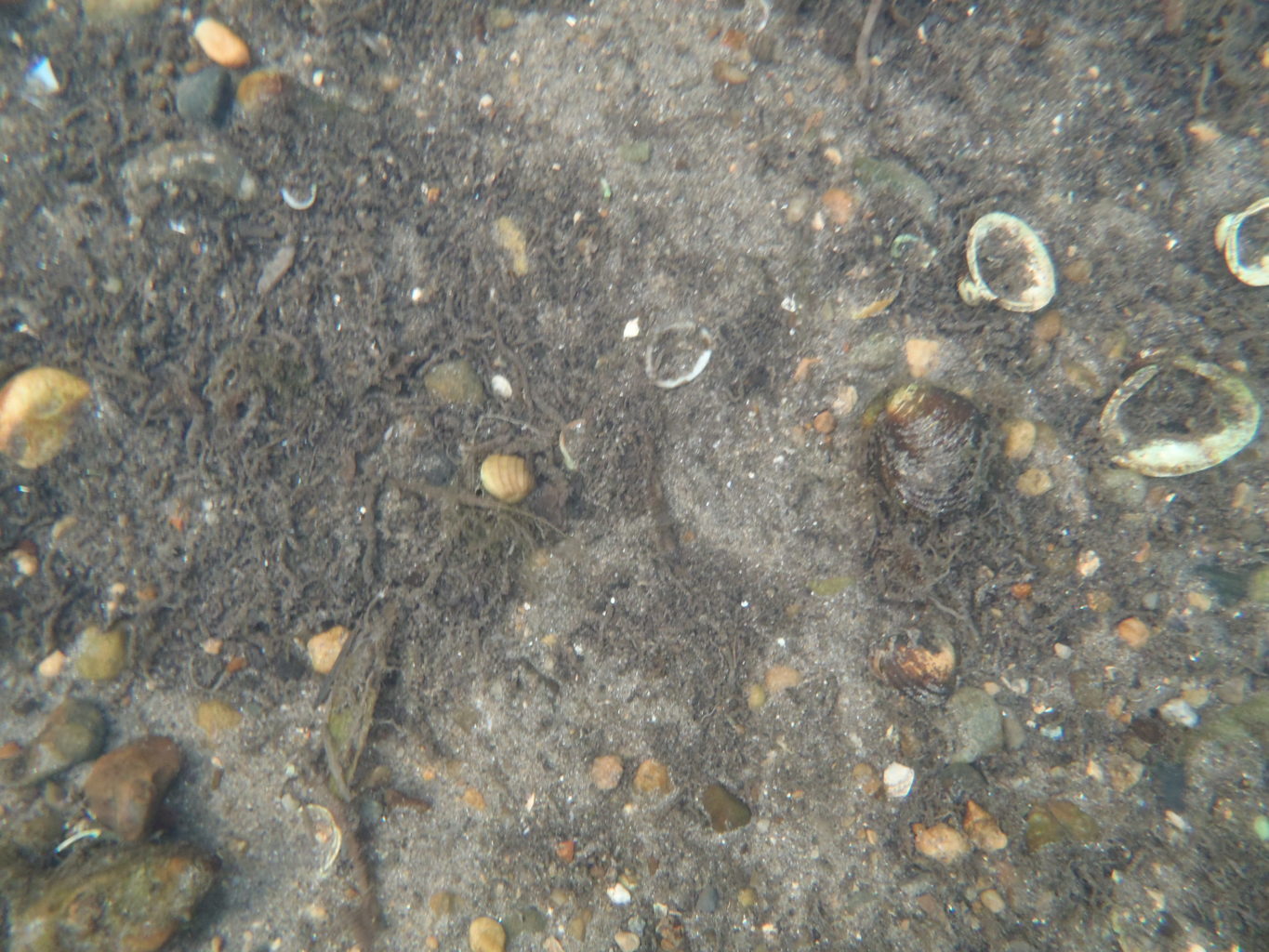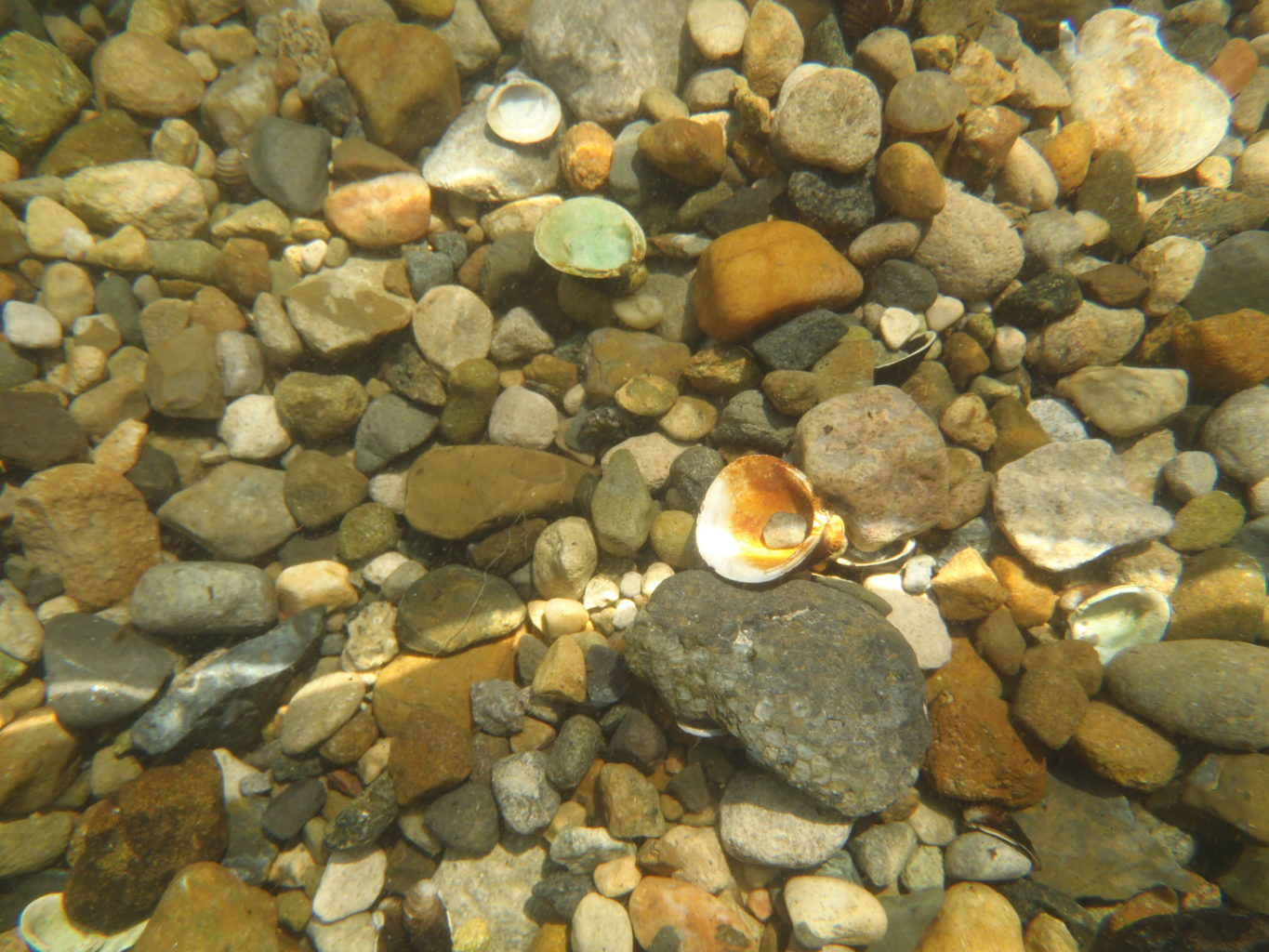Effects of Sand Wand on benthic community
Benthic macro-invertebrates are tiny aquatic creatures, large enough to be seen with the naked eye, but small enough that a microscope is often needed for identification. Some spend all of their life as bottom dwelling organisms (e.g., Scuds), and others spend a portion of their life on land (e.g., Dragonflies and Mayflies). These tiny creatures are the base of the food web upon which most of the fish communities in Fawn River (Orland, IN) depend on.
One of the many important requirements needed for the macro-invertebrate community to thrive is a clean gravel bottom, with interstitial spaces between the gravel and cobble. These spaces or “porosity” provide the best habitat for most macro-invertebrates.
When a stream bottom’s gravel is clogged with sand and sediment, the housing for these small creatures is reduced, and without housing, the population density and diversity is reduced. One of the major goals of the restoration is to remove the sediments choking the Fawn River’s bottom, thus restoring the gravel habitat (housing) for macro-invertebrates, which will allow larger populations of macro-invertebrates to thrive and eventually lead to a healthier fishery.
During our restoration project on Fawn River, we independently collected data regarding the effects of the Sand Wand™ on the benthic community. Samples were collected of the sediment-laden bottom pre-restoration, and followed up at the same location – using the same sampling protocol – post restoration. We continued this procedure at various intervals over the next several weeks. We expected that the pre-restoration sediment choked bottom would have little activity, and that once cleaned it would take several weeks for the benthic community to colonize in the newly restored habitat. Expectations were exceeded when the benthic community improved, both in numbers and diversity, within a few weeks.

Why are macro-invertebrates important?
A healthy ecosystem includes thriving benthic communities. Macro-invertebrates play a vital role in stream ecosystems, both as a food source and as consumers of algae and other organic matter. According to the Environmental Protection Agency aquatic macro-invertebrates are good indicators of stream quality because:
• They are affected by the physical, chemical, and biological conditions of the stream.
• They can’t escape pollution and show the effects of short and long term pollution events.
• They may show the cumulative impacts of pollution.
• They may show the impacts from habitat loss not detected by traditional water quality assessments.
• They are a critical part of the stream’s food web.
• Some are very intolerant of pollution.
• They are relatively easy to sample and identify.
Benthic macro-invertebrates are commonly used indicators of river ecological condition that can be adversely affected by fine sediment accumulation. For benthic invertebrates, sedimentation means the loss of habitat variability, quality and quantity.


